
10 times the night sky amazed us in 2023 (Image Credit: Space.com)
The night sky of 2023 delivered many amazing views, from bright fiery comets to extraordinary auroras, unexpected meteor lunar impacts, newfound supernovas — and even a lost astronaut tool bag floating through space. Here are some of Space.com’s most memorable skywatching sights from this year.
New Year, new comet

2023 kicked off with a close approach of comet C/2022 E3 (ZTF). This newly-discovered comet made its closest approach to Earth on Feb. 1, passing within 28 million miles (42 million kilometers) of our planet. This was the comet’s first approach in 50,000 years.
First discovered in March 2022, C/2022 E3 originated from the outer reaches of the solar system, within the Oort Cloud. The comet’s bright green glow was easily visible to viewers using binoculars or a small telescope. However, as the comet traveled through the inner solar system, its orbit was altered such that it is now on a trajectory out of the solar system, meaning this was its first and last visit near Earth. Stargazers and astrophotographers captured amazing images of the bright green comet during its visit between January and February, which you can see here on Space.com.
New supernova caught in action
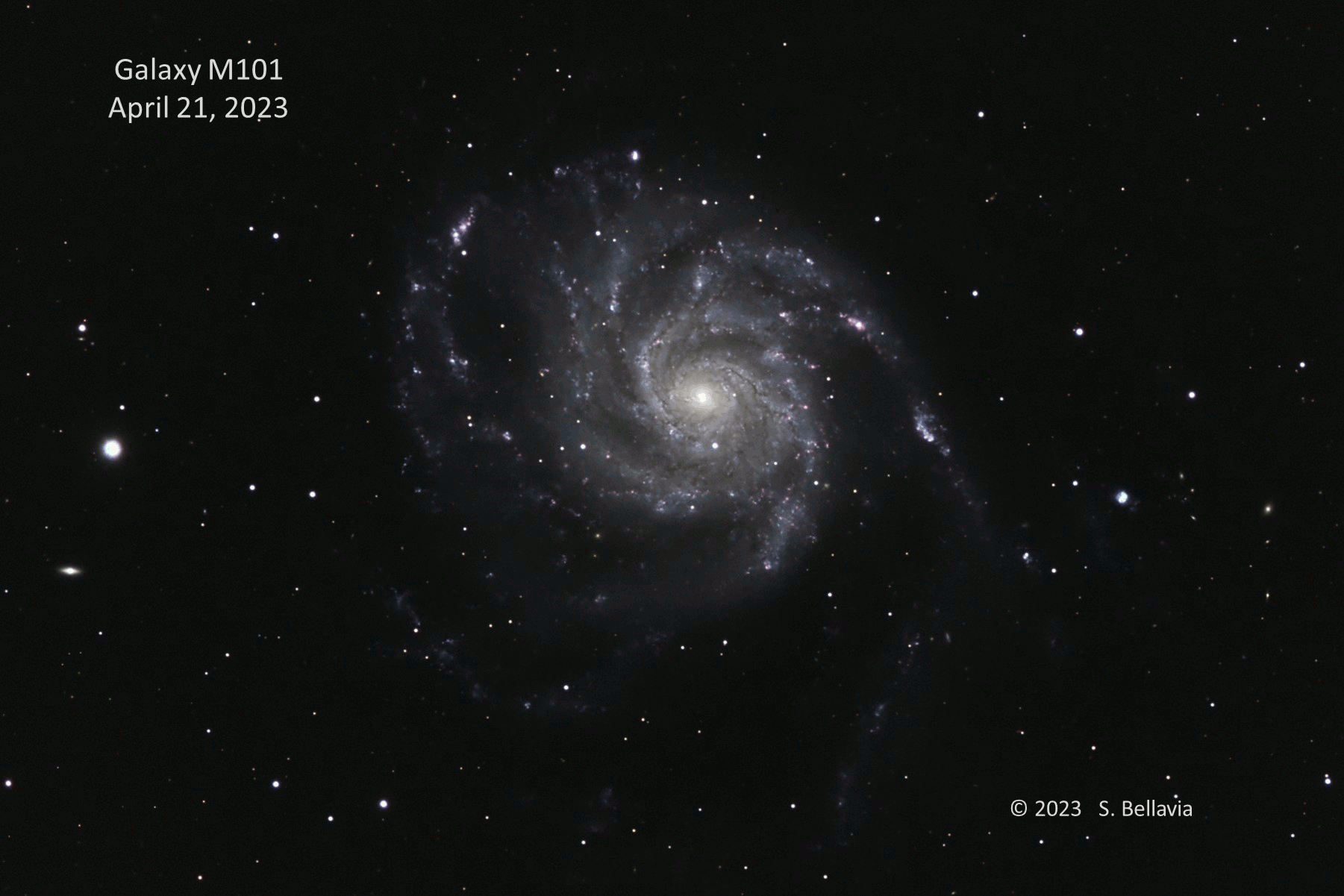
Astronomers caught sight of a new supernova in the Pinwheel Galaxy, also known as Messier 101 or M101, which is a face-on spiral galaxy located 21 million light-years from Earth. A bright burst of light was observed in one of the galaxy’s arms, suggesting a massive star had reached the end of its life and exploded in a stellar event called a supernova.
The supernova, designated SN 2023ixf, was first spotted in an image taken by experienced supernova hunter Koichi Itagaki, from Yamagata, Japan, on May 19, 2023. While the supernova itself occurred 21 million years ago, the light from the stellar explosion had been traveling through space and only recently came into our view from Earth this year. SN 2023ixf represents one of the largest and brightest supernovas seen in a decade, and can be observed using a small telescope.
Supergiant star on the brink of supernova
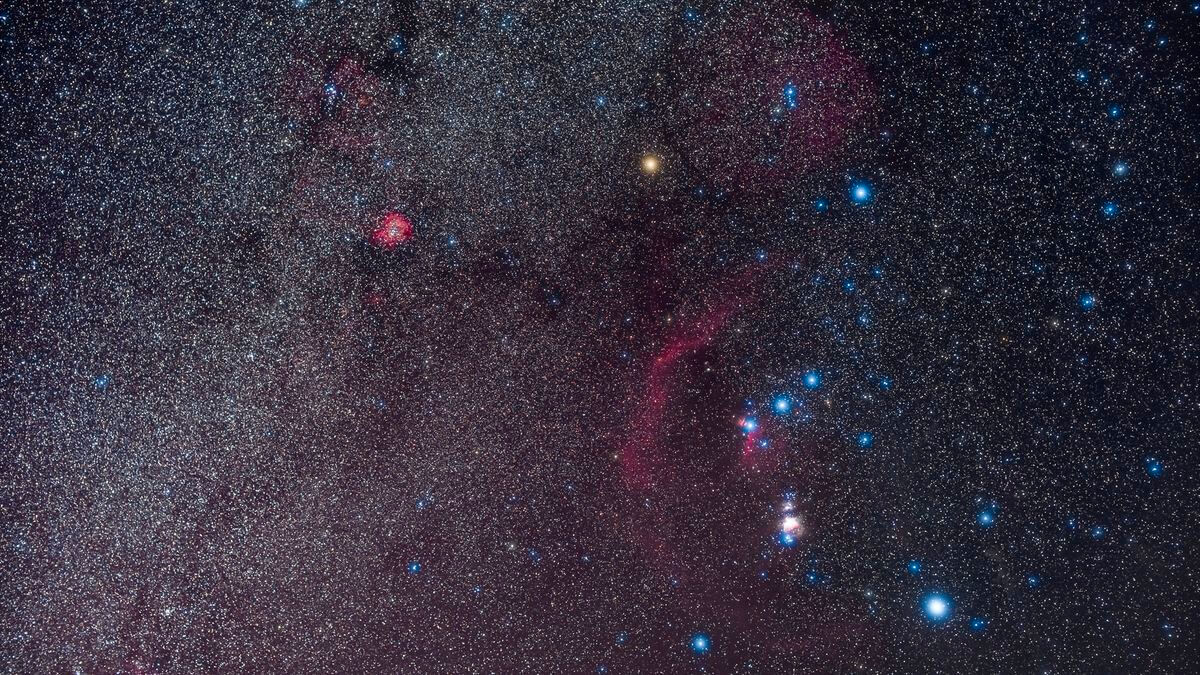
A noticeable brightening of the popular star Betelgeuse was observed this year, suggesting it may soon explode in a supernova. Betelgeuse is a red supergiant star located 650 light-years from Earth in the Orion constellation, marking the left shoulder of the Hunter.
Earlier this year, observers noticed that the star — which usually ranks as the tenth-brightest star in the night sky — was exceptionally bright, shining at over 140% its usual brightness and earning the rank of seventh-brightest star. While Betelgeuse is known for its periodic brightening and dimming, this unusual activity is a sign that the star may be reaching the stage of life when it runs out of hydrogen and begins to fuse helium in its core before exploding in a bright burst known as a supernova.
Meteorite caught crashing into moon
A meteorite crashed into the moon on Feb. 23 and a Japanese astronomer captured the bright flash of the impact on camera. The meteorite impacted the moon’s nightside, near the Ideler L crater, which is slightly northwest of Pitiscus crater.
Traveling at an average speed of 30,000 mph (48,280 kph), or 8.3 miles per second (13.4 km/s), meteor impacts create large surface craters, which generate intense heat and produce a bright flash of light. Such an event is visible to skywatchers during lunar nighttime when a meteor strikes an area of the moon facing Earth. The impact crater formed by this meteor crash — which you can watch a video of on Space.com — is expected to be about a dozen meters (39 feet) in diameter.
Supercharged auroras surprised skywatchers

An extraordinarily powerful geomagnetic storm triggered beautiful auroras as far south as New Mexico and Arizona in March. Auroras occur when charged particles from solar wind interact with molecules in Earth’s atmosphere. Generally, most aurora displays are only visible at very high latitudes because Earth’s magnetic field lines funnel the solar particles toward the poles. However, in some cases, solar bursts called coronal mass ejections trigger auroras in lower latitudes.
On March 23, a powerful solar eruption caused a severe G4 storm — classified based on the 5-grade scale used by the U.S. National Oceanic and Atmospheric Administration (NOAA) — that not even space weather forecasters saw coming. This storm illuminated the night sky across many states, providing an opportunity for skywatchers to snap incredible aurora photos.
August’s rare Super Blue Moon
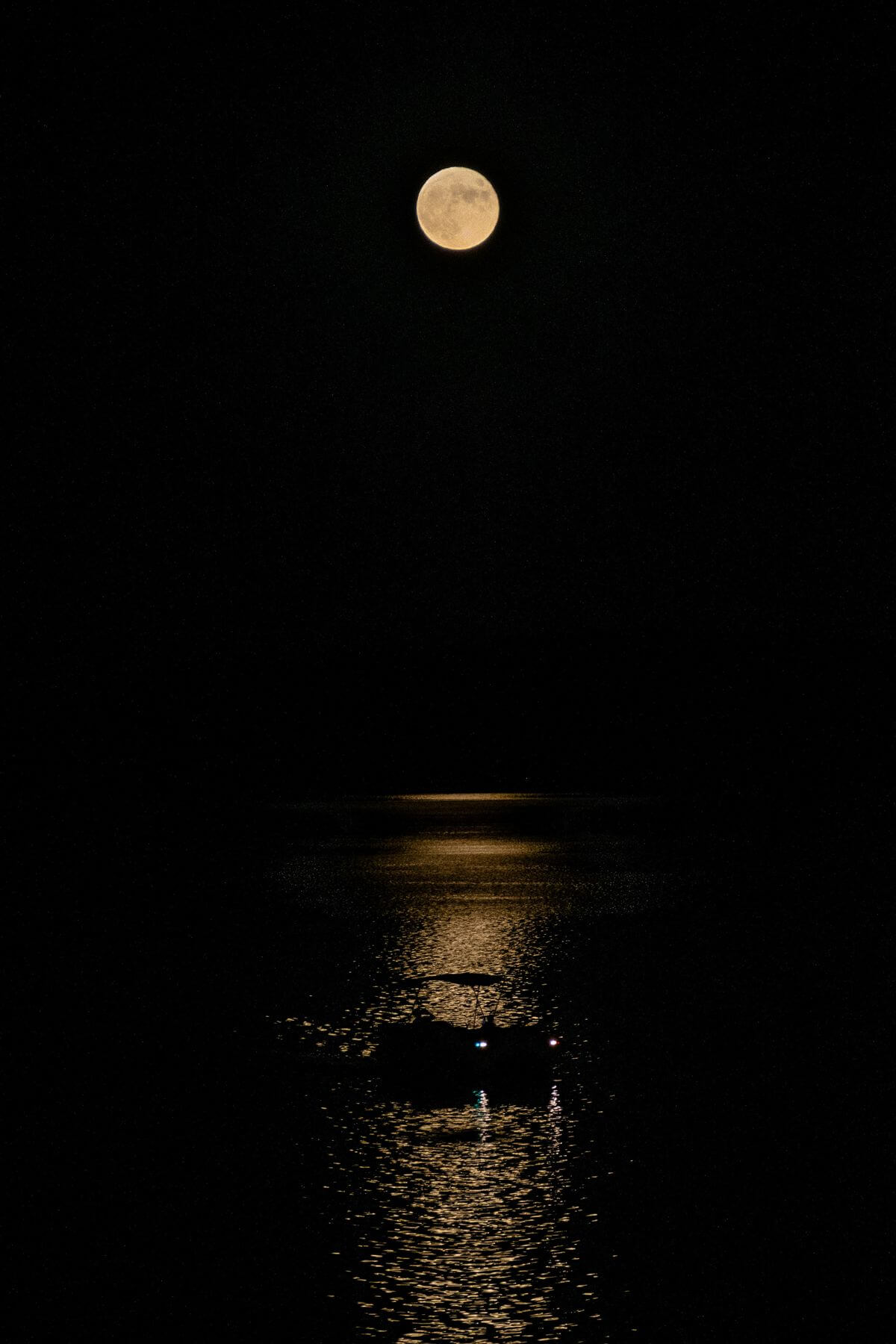
August brought skywatchers a rare “super blue moon” as the second — and closest — full moon of the month. The term “supermoon” is used to describe a full moon at perigee, or its closest point to Earth in its orbit, which makes it appear larger and brighter in the night sky. The full moon on Aug. 30 was only 222,043 miles (357,343 kilometers) away, compared to its average distance of 238,855 miles (384,399 km), making it the closest of all the full supermoons this year. In addition, it was the second full moon of the month (also referred to as a blue moon), earning the full moniker of “super blue moon.”
This particular lunar event offered skywatchers a viewing treat. While both a blue moon and a full supermoon are fairly common on their own, a moon that is both blue and super is a bit more rare. The last such event occurred in December 2009, and the next won’t happen again until August 2037. You can check out beautiful photos of August’s super blue moon on Space.com.
Newfound comet travels close to the sun

The recently discovered Comet Nishimura, also known as C/2023 P1, survived a close encounter with the sun, on Sept. 17, when it passed within only 20.5 million miles (33 million km) of it.
The bright comet was caught on camera by one of two Solar TErrestrial RElations Observatory (STEREO) spacecraft — STEREO-A — as it took images of the sun’s outer atmosphere on Sept. 19. The images suggest the comet has remained intact, though there may be longer-term effects from being heated by the sun. The comet was only recently discovered by Japanese amateur astronomer Hideo Nishimura of Kakegawa City, Japan, on Aug. 12th.
“Ring of fire” annular solar eclipse
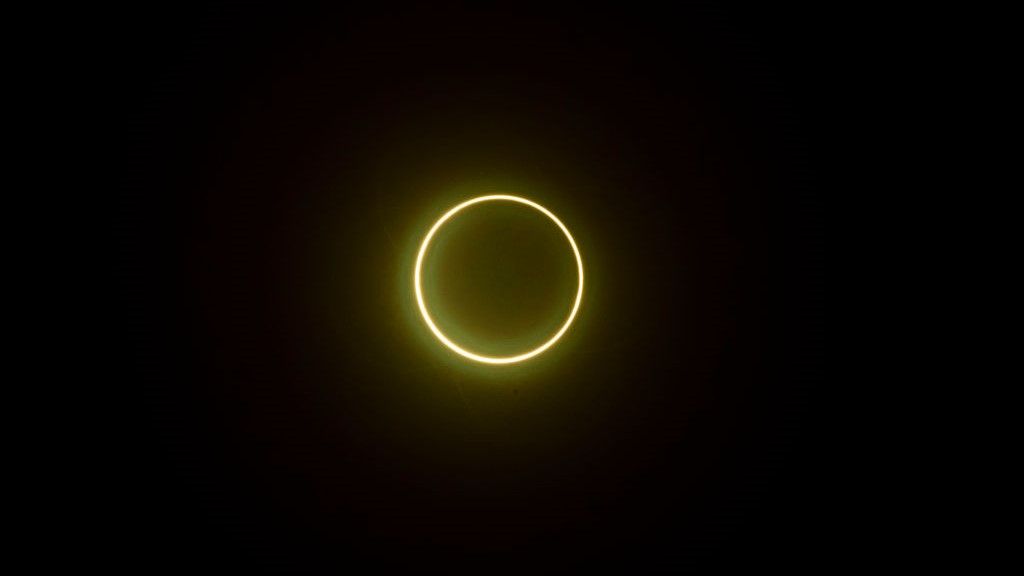
An annular solar eclipse wowed viewers in North, Central and South America on Oct. 14 with its “ring of fire” around the moon.
During an annular solar eclipse, the moon passes directly between the Earth and sun. However, the moon is at the farthest point in its orbit from Earth, so it doesn’t completely block the sun (that’s called a total solar eclipse). Instead, the sun’s fiery light surrounds the moon’s shadow, creating the so-called ring of fire.
The annular solar eclipse began in Oregon, traveling across eight U.S. states before heading over Mexico, Guatemala, Belize, Honduras, Nicaragua, Costa Rica, Panama, Colombia and Brazil. It was visible to millions of people, providing skywatchers an opportunity to photograph the rare event. You can check out Space.com’s roundup of the best 2023 annular solar eclipse photos here.
Lost tool bag floating in space
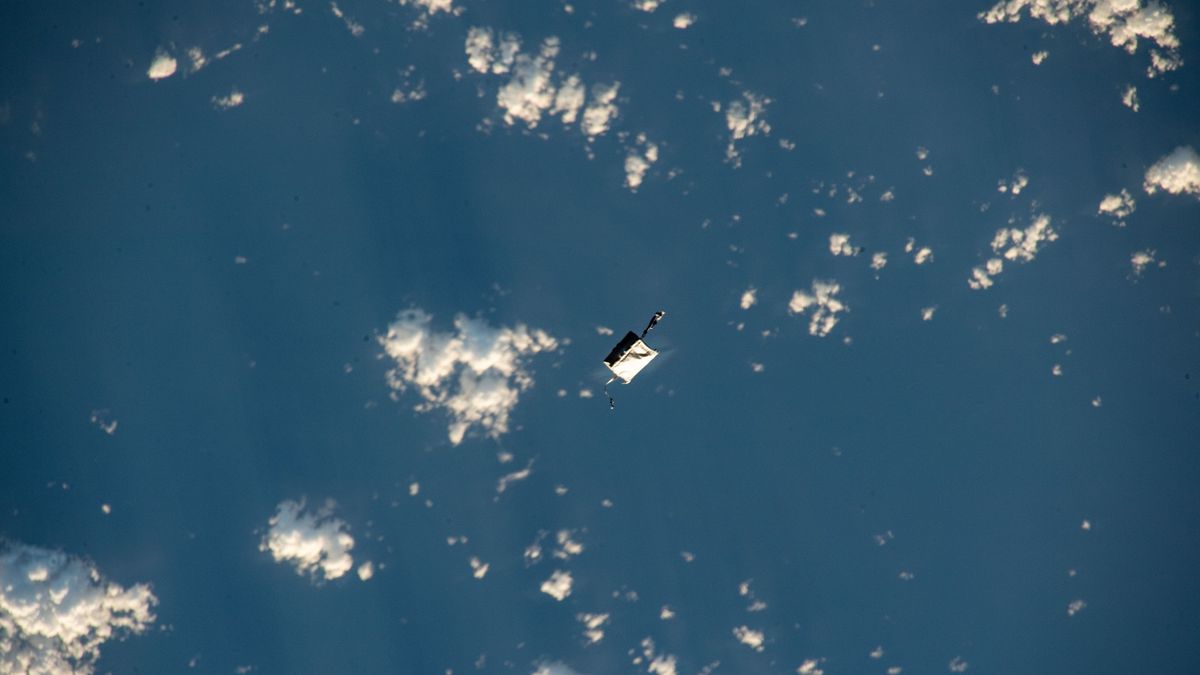
A November spacewalk by two astronauts performing maintenance on the International Space Station (ISS) resulted in a lost tool bag that for now floats through space, about 258 miles (415 kilometers) above Earth. The bright white tool bag showed up in footage captured by the Virtual Telescope Project on Nov. 15.
The trajectory of the floating tool bag, which appears as a sharp dot of light when viewed through binoculars or a telescope, is not expected to collide with the orbiting lab. Instead, it will remain in space for a few months before safely burning up in Earth’s atmosphere, high above the planet’s surface. This is not the first time spacewalkers have inadvertently lost equipment, as bulky spacesuit gloves can make it challenging for astronauts to keep a tight grip on their tools while working in space.
‘Devil Comet’ approaches Earth
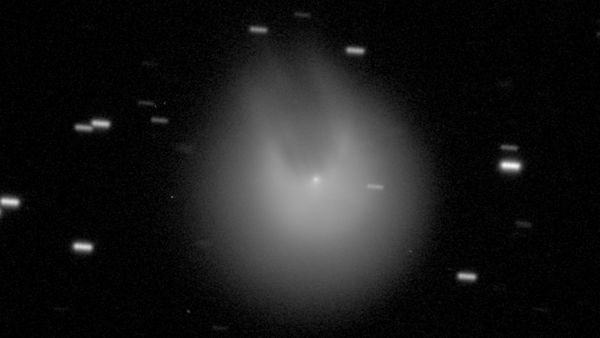
The icy volcanic comet 12P/Pons-Brooks, nicknamed the “Devil Comet,” is headed toward Earth and may brighten to naked-eye visibility by March 2024. Discovered in 1812, the Devil Comet is known for its violent eruptions, during which a powerful blast of ice and gas creates a glowing halo resembling devil horns. The fourth, and largest outburst yet, occurred on Nov. 14, and was photographed by amateur astronomer Eliot Herman, who witnessed a 100-fold increase in the comet’s brightness.
Traveling at a speed of 40,000 mph (64,373 km/h), the cryovolcanic comet — which has a heart of ice, gas and dust within an icy outer shell — is expected to reach its closest distance to Earth on June 2, 2024, at which time it will come within 144 million miles (232 million km) of our planet.





